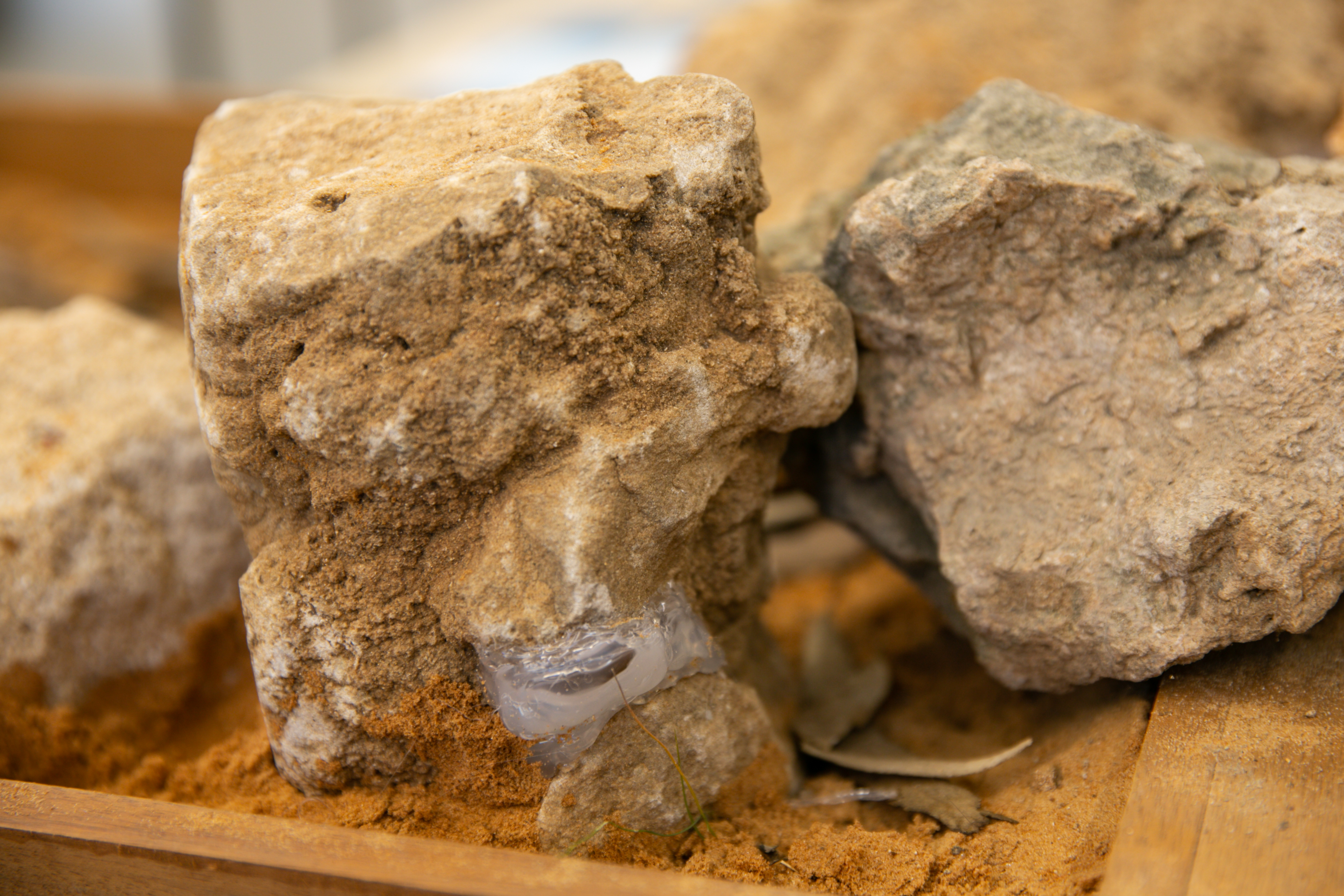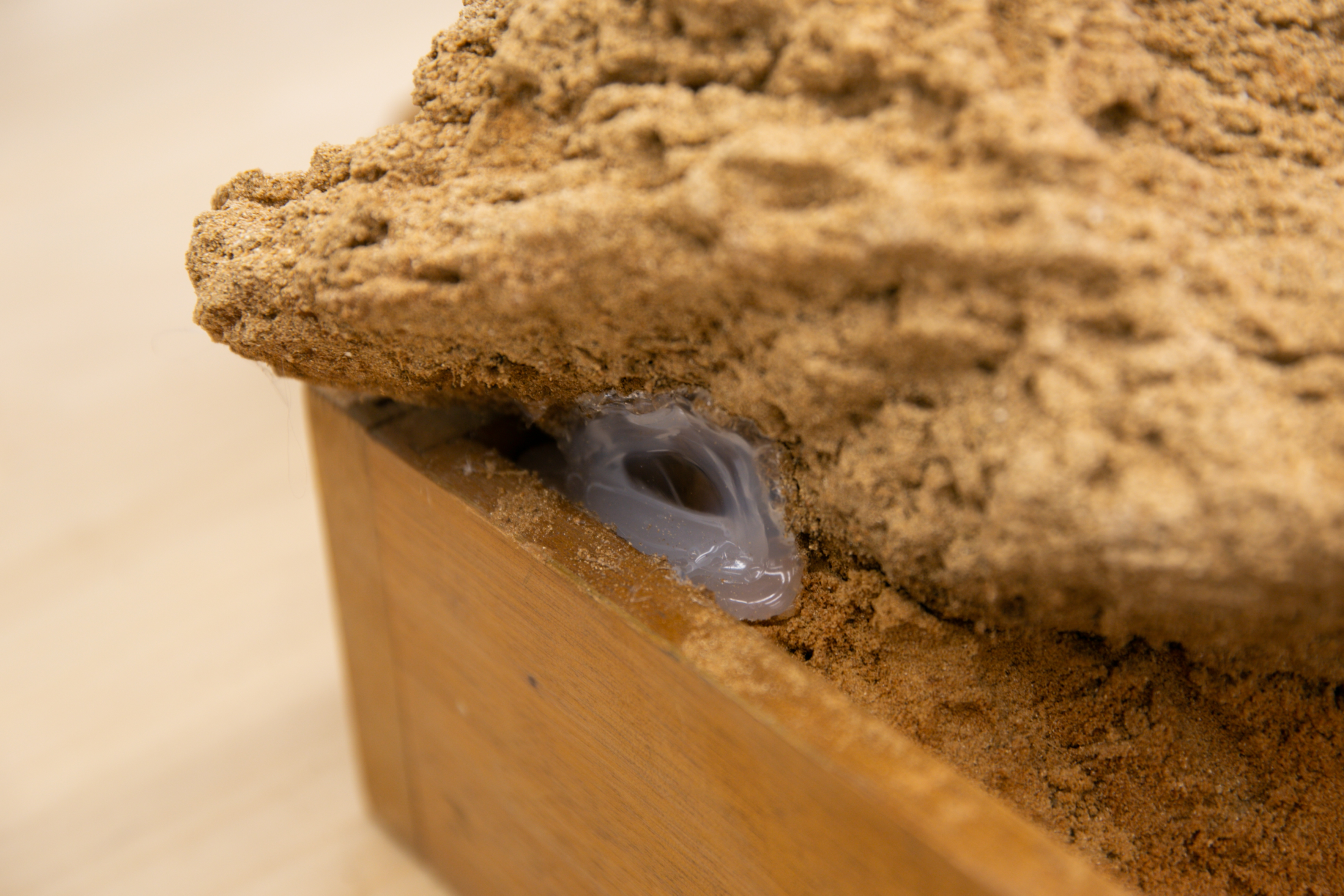
An amphibian from the salamandridae family.
Newts are born in water but spend most of their life on land, returning to the water only to reproduce. They survive on land by covering themselves in slime, which helps them retain their fluids and protects them from UV radiation until they find a wet, shaded area where they can hibernate for the summer.
Extreme weather has made sources of water scarce, and conditions have become harsher.
Every summer, adult newts go in search of a safe place where they can hibernate. However, in the current climate, mere shade no longer offers the newt sufficient protection, forcing it to find another solution.
Upon finding a suitable spot, the newt starts building its shelter. It spends about a week shaping its slime into a structure that would keep it safe and moist throughout the summer months. The newt then twists its flexible body and creates pockets of moisture inside the structure with its muscular tongue, layering them one on top of the other.
The resulting structure can last five to six months after the newt no longer needs it, before finally drying up and crumbling apart.
Eli Zajicek, Yuval Dekel




